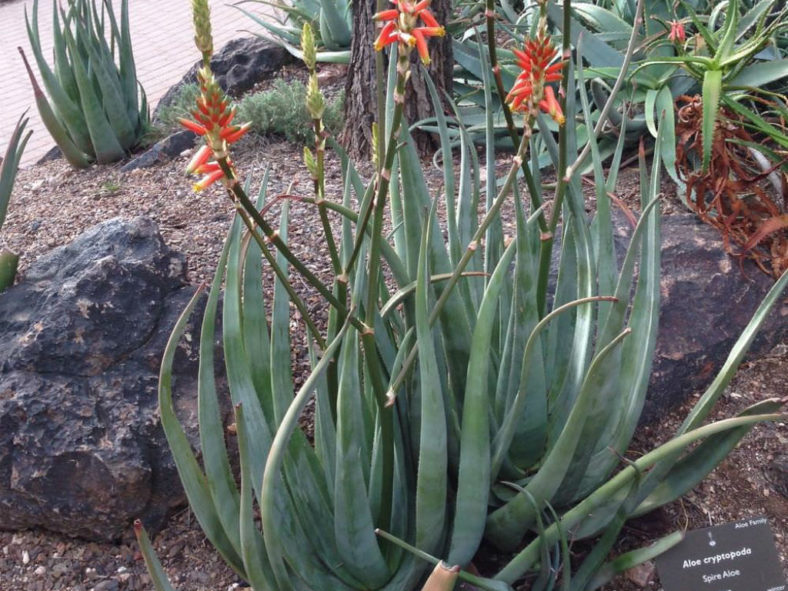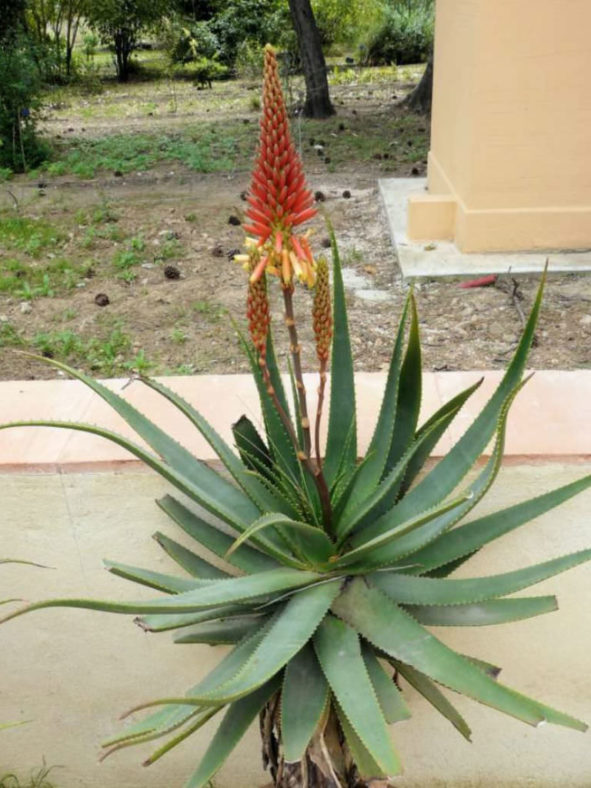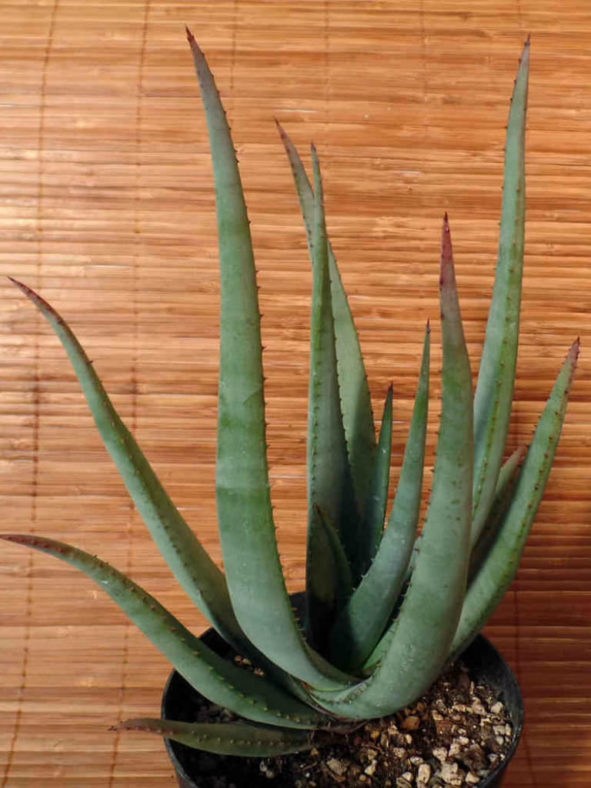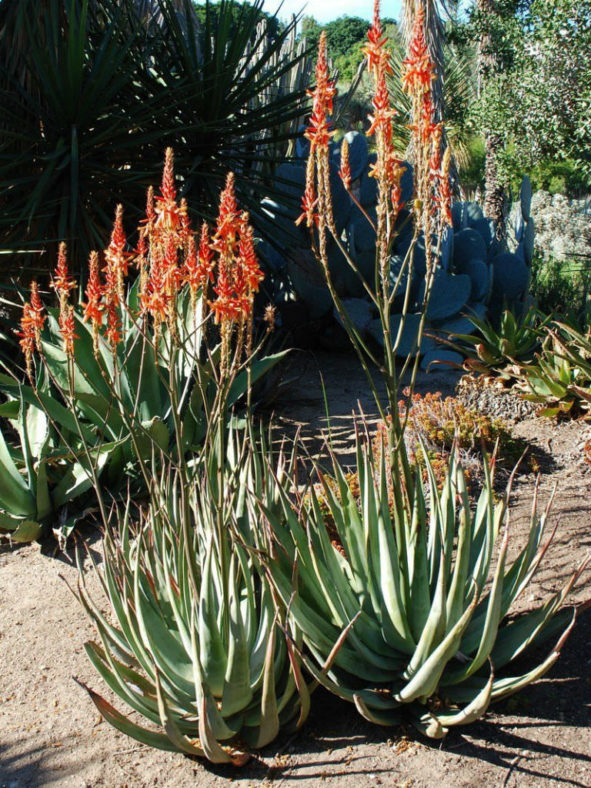Scientific Name
Aloe cryptopoda Baker
Synonym(s)
Aloe wickensii var. wickensii, Аloe wickensii var. lutea
Scientific Classification
Family: Asphodelaceae
Subfamily: Asphodeloideae
Genus: Aloe
Description
Aloe cryptopoda is a beautiful succulent with a spectacular display in full flower. It can grow solitary or in a small group of rosettes, usually stemless or with a short, hidden, decumbent stem. The leaves are narrow, measuring up to 3 feet (90 cm) long and 6 inches (15 cm) wide. They are grayish-green with reddish-brown teeth along the margins.
The inflorescences are erect, branched panicles that bear up to 8 conical, densely flowered racemes, more or less uncolored scarlet. They can grow up to 5.7 feet (1.75 m) tall. The flowers are cylindrical, somewhat trigonous, and appear in winter, measuring up to 1.6 inches (4 cm) long. They are bright red to scarlet, greenish-tipped in the bud, with the upper half turning yellowish when fully open.

Hardiness
USDA hardiness zones 9b to 11b: from 25 °F (−3.9 °C) to 50 °F (+10 °C).
How to Grow and Care
Aloes are very forgiving plants. However, as with all succulents, Aloe must never be allowed to sit in stagnant water, and the plant should be carefully monitored to watch for signs of overwatering.
These succulents are not particularly fast-growing and will only rarely need repotting. However, repot Aloes tipping over their pots or have ceased growing in the spring. Use a fast-draining potting mix with one-third sand or pebbles. When repotting a larger plant, dividing the root ball carefully is possible. Some varieties of Aloe will send off offsets that can be potted independently.
Aloe plants need strong, bright light. They can withstand full summer sun once acclimated. In the winter, provide bright light. It prefers warmer temperatures of 70 to 80 °F (21 to 27 °C) but will survive down to 40 °F (4.5 °C). Feed with a succulent fertilizer in the summer only. Suspend feeding in the winter as the plant goes dormant.
See more at How to Grow and Care for Aloe.
Origin
Aloe cryptopoda is native to South Africa, Swaziland, Mozambique, and Malawi.
Links
- Back to genus Aloe
- Succupedia: Browse succulents by Scientific Name, Common Name, Genus, Family, USDA Hardiness Zone, Origin, or cacti by Genus
Photo Gallery
Click on a photo to see a larger version.


